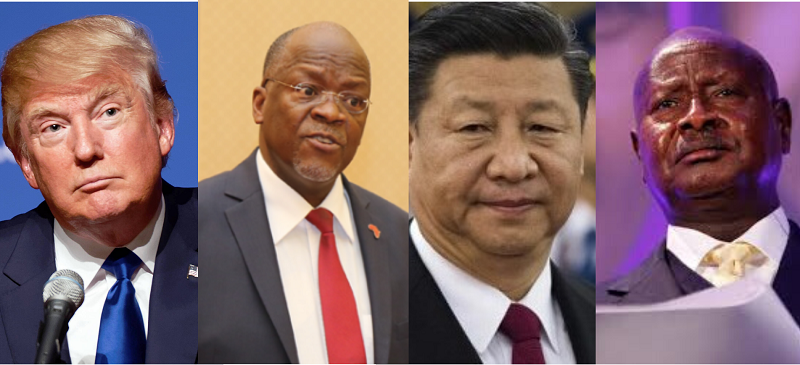“Negative messages hurt the right to self esteem"
May 17th, 2013 An alarming number of young people are succumbing to the worldwide epidemic of negative body image, says Janine Wan, 15, a Correspondent based in Melbourne, Australia. At the same time there are efforts to counteract the harmful messages about so-called ideal bodies.
An alarming number of young people are succumbing to the worldwide epidemic of negative body image, says Janine Wan, 15, a Correspondent based in Melbourne, Australia. At the same time there are efforts to counteract the harmful messages about so-called ideal bodies.
On the 10th of May 2013, it was announced that the Positive Body Image Awards would be happening again this year. Started in 2012, these annual awards were created to recognise organisations and companies that sponsored initiatives to promote positive body images, focusing on building young people’s resilience to negative body image pressures. The awards are one of the many attempts to tackle the increasingly worrying body image issue amongst youth.
‘Body image’ refers to the way we think, and assume the way other people think, about our own bodies. People with negative body image may have an inaccurate view of their own body, causing anxiety as they compare their bodies with their peers and unrealistic images of bodies portrayed in the media. This often leads to a low sense of self-esteem, sometimes causing eating disorders and other forms of self-harm. According to the National Association of Anorexia Nervosa and Associated Disorders (ANAD), over one-half of teenage girls and nearly one-third of teenage boys use unhealthy weight control behaviors such as skipping meals, fasting, smoking cigarettes, vomiting, and taking laxatives.
More young people are succumbing to the worldwide epidemic of negative body image everyday. There are many reasons driving the negative body image issue that is present today.
The media plays a very large role in creating an unrealistic version of the “ideal body”. Television, movies and magazines seldom hide society’s obsession with being attractive, and often promote underweight models. The average female model today weighs 23 per cent less than an average woman, and only five per cent of all women are model thin. Despite the efforts of some media companies to promote healthy living and healthy body types, images of stick-thin models are still ubiquitous. Even so, the few fashion designers and magazines that have welcomed the idea of “real”-sized models generally choose women of sizes 10-14 to be their models, while the average Australian woman wears size 14 clothes.
On the other hand, some companies have totally rejected the idea of using “real”-sized models at all. Recently, the CEO of Abercrombie & Fitch, Mike Jeffries, explained why he did not want to use “real”-sized people to market their clothes, saying that “good-looking people attract other good-looking people, and we want to market to cool, good-looking people. We don’t market to anyone other than that”. According to him, “a lot of people don’t belong [in our clothes], and they can’t belong.” That is definitely not true. Everyone is fabulous.
Women are not the only ones being affected by their portrayal in the media and marketing. Men are often portrayed as buff and muscular yet lean, with prominent ‘abs’, or abdominal muscles. Males, too, feel an immense pressure to live up to this standard in order to appear attractive for their peers, and often work excessively and diet in order to try to gain what they now see as a perfect body.
Comments from other people also play a very large part in this issue. People take what other people think of them very seriously. From the moment a baby is born, the child is surrounded by the opinions of others about his or her appearance: from “How handsome!” to “Look at those little chubby legs!” to much less flattering comments. These comments from adults, authorities and peers, while seemingly harmless, form what the child or youth may come to believe in the future.
Negative body image can begin at a very young age, starting with the exposure to over-sexualised dolls with “perfect” figures, such as the Barbie. The Yale Center for Eating and Weight Disorders calculated how much an average healthy woman’s body would have to change in order for her to have the proportions of a Barbie doll, and found that women would have to grow two feet taller, extend their neck length by 3.2 inches, gain five inches in chest size, and lose six inches on their waistline to live up to such a doll. The dimensions are impossible and daunting, yet this is the image that young children are exposed to at an early age. In an attempt to combat this, a new doll has been created. The Lottie doll has a childlike form, modeled according to the average body of a nine-year-old girl. The Lottie doll has practical clothes and healthy outdoor habits. Sold online, the Lottie doll was developed by Arklu, with the motto “Be bold, be brave, be you”.
Society has devalued the importance of a person’s character in favour of their ability to look good. This needs to change. The alarming trend of increasing body negativity needs to be stopped. By working towards positive thinking and acceptance of others, no matter what size, age or race, we can overthrow this rule of diets, disorders and doubt.
…………………………………………………………………………………………………………………
About me: I am a 15-year-old student in Melbourne, but have been brought up in both America and Singapore. I love to read, to write and to eat pizza. I also love tinkering with gadgets, though I’m not very good at that. My superpower of choice would be enhanced intelligence, so I could do and build things to defy the constraint of time and space. I do my best writing while procrastinating, which I do rather often.
…………………………………………………………………………………………………………………
Opinions expressed in this article are those of the author and do not necessarily represent the views of the Commonwealth Youth Programme. Articles are published in a spirit of dialogue, respect and understanding. If you disagree, why not submit a response?
To learn more about becoming a Commonwealth Correspondent please visit: http://www.yourcommonwealth.org/submit-articles/commonwealthcorrespondents/
…………………………………………………………………………………………………………………
photo credit: RedJinn: World Peace: What are you doing about it? via photopin cc




